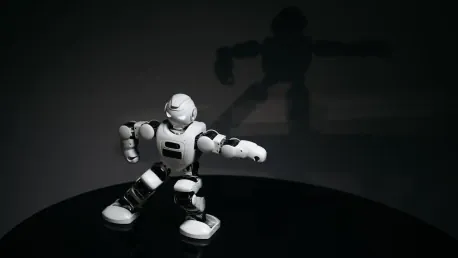In recent years, humanoid robots have experienced rapid advancement, transitioning from mere concepts in science fiction to practical applications in the real world at an unprecedented pace. These robots, once depicted as simple mechanical servants or highly advanced entities indistinguishable from humans in literature and films, are now being developed and deployed to perform a variety of complex and intricate tasks far beyond mere novelty.
Current Developments
Today, humanoid robots are utilized in numerous intricate industrial tasks such as welding and lifting heavy objects, showcasing their advanced capabilities. While earlier generations of humanoid robots found their roles mainly in customer-facing positions, particularly in Japan, the new wave is designed for more sophisticated and demanding environments. Their roles now extend beyond service tasks to performing vital functions in industrial settings, contributing significantly to operational efficiency and productivity.
Manufacturers’ Approaches
Many companies are intentionally designing humanoid robots to maintain a mechanical appearance to alleviate societal fears regarding human-like machines while still achieving human-like motor functions. Tesla’s Optimus robot, although still in its prototype stages, represents a significant milestone in this field, with Elon Musk predicting it could become the company’s most substantial product. Despite skepticism about the current market readiness for such robots, their potential impact cannot be understated.
Distinctions in Robotics
Humanoid robots are designed to replicate human movement and structure, yet they are not necessarily created to look human. Androids, a subset of humanoids, aim to be indistinguishable from humans in both appearance and behavior, though their complexity makes them largely aspirational. Cyborgs, the fusion of biological and mechanical systems, remain a concept found mainly within the realms of science fiction and are not yet a practical reality.
Market Trends
The humanoid robot market is showing a strong growth trajectory, with projections that it will increase substantially from approximately $2.43 billion in 2023 to around $66 billion by 2032. The Asia-Pacific region is anticipated to experience significant growth in this sector, driving innovation and adoption rates in various industries.
Technological Challenges
Humanoid robots face several technological challenges. Achieving human-like interaction remains difficult, with the Turing Test still serving as an unfulfilled milestone. Overcoming the “Uncanny Valley” phenomenon requires advancements in making robots’ appearances and movements more natural, while developing long-lasting and compact power sources is essential for their practical deployment. Addressing these challenges is crucial to making humanoid robots more efficient and widely accepted.
Legal and Ethical Considerations
The integration of humanoid robots into society calls for comprehensive legal and ethical frameworks. These frameworks must address safety standards, liability issues, and ethical guidelines. Ensuring the safe and ethical deployment of humanoid robots will be essential as they become more prevalent in various aspects of life.
Leading Companies
Tesla is a leading player with its Optimus robot, which targets general-purpose tasks. Figure AI focuses on industrial applications, especially in the automotive manufacturing sector. Meanwhile, Boston Dynamics is known for its robots with advanced motor skills that are applicable in dynamic environments. These companies are at the forefront of developing technologies that could reshape industries and daily life.
Potential Dangers
However, the rise of humanoid robots comes with potential dangers. There is the threat of robots being hacked or programmed for malicious purposes, which could pose significant risks. Additionally, the impact of automation on the job market raises concerns about economic displacement. Privacy issues also come into play as robots with sensors and cameras might infringe on personal privacy.
Future Predictions
Humanoid robots have advanced at a remarkable rate, shifting from the realm of science fiction to practical reality much faster than many anticipated. The modern iterations of humanoid robots are now being programmed and utilized to handle a diverse array of complex and delicate tasks that go far beyond their original novelty appeal.
These advancements encompass a wide range of fields, including healthcare, where robots assist in surgeries and patient care, as well as in industries such as manufacturing, where they perform tasks with unprecedented precision and efficiency. Additionally, humanoid robots are increasingly being used in customer service roles, helping to enhance user experiences by providing consistent and reliable assistance. As technology continues to advance, the roles of these robots are expected to expand even further, making them an integral part of various sectors and daily life.









